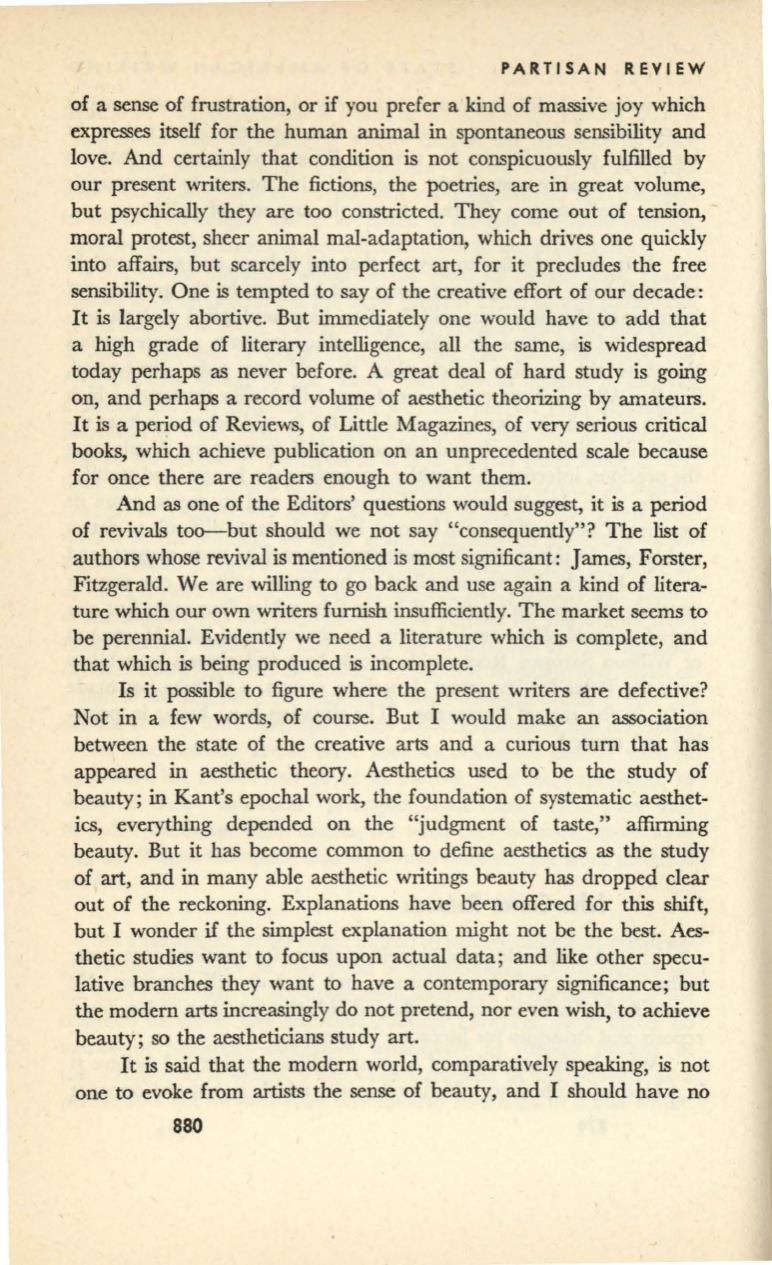
PARTISAN REVIEW
of a sense of frustration, or if you prefer a kind of massive joy which
expresses itself for the human animal in spontaneous sensibility and
love. And certainly that condition is not conspicuously fulfilled by
our present writers. The fictions, the -poetries, are in great volume,
but psychically they are too constricted. They come out of tension,
moral protest, sheer animal mal-adaptation, which drives one quickly
into affairs, but scarcely into perfect art, for it precludes the free
sensibility. One is tempted to say of the creative effort of our decade:
It
is largely abortive. But immediately one would have to add that
a high grade of literary intelligence, all the same, is widespread
today perhaps as never before. A great deal of hard study is going
on, and perhaps a record volume of aesthetic theorizing by amateurs.
It is a period of Reviews, of Little Magazines, of very serious critical
books, which achieve publication on an unprecedented scale because
for once there are readers enough to want them.
And as one of the Editors' questions would suggest, it is a period
of revivals too--but should we not say "consequently"? The list of
authors whose revival is mentioned is most significant: James, Forster,
Fitzgerald. We are willing to go back and use again a kind of litera–
ture which our own writers furnish insufficiently. The market seems to
be perennial. Evidently we need a literature which is complete, and
that which is being produced is incomplete.
Is it possible to figure where the present writers are defective?
Not in a few words, of course. But I would make an association
between the state of the creative arts and a curious tum that has
appeared in aesthetic theory. Aesthetics used to be the study of
beauty; in Kant's epochal work, the foundation of systematic aesthet–
ics, everything depended on the "judgment of taste," affirming
beauty. But it has become common to define aesthetics as the study
of art, and in many able aesthetic writings beauty has dropped clear
out of the reckoning. Explanations have been offered for this shift,
but I wonder
if
the simplest explanation might not be the best. Aes–
thetic studies want to focus upon actual data; and like other specu–
lative branches they want to have a contemporary significance; but
the modern arts increasingly do not pretend, nor even wish, to achieve
beauty; so the aestheticians study art.
It is said that the modern world, comparatively speaking, is not
one to evoke from artists the sense of beauty, and I should have no
880


